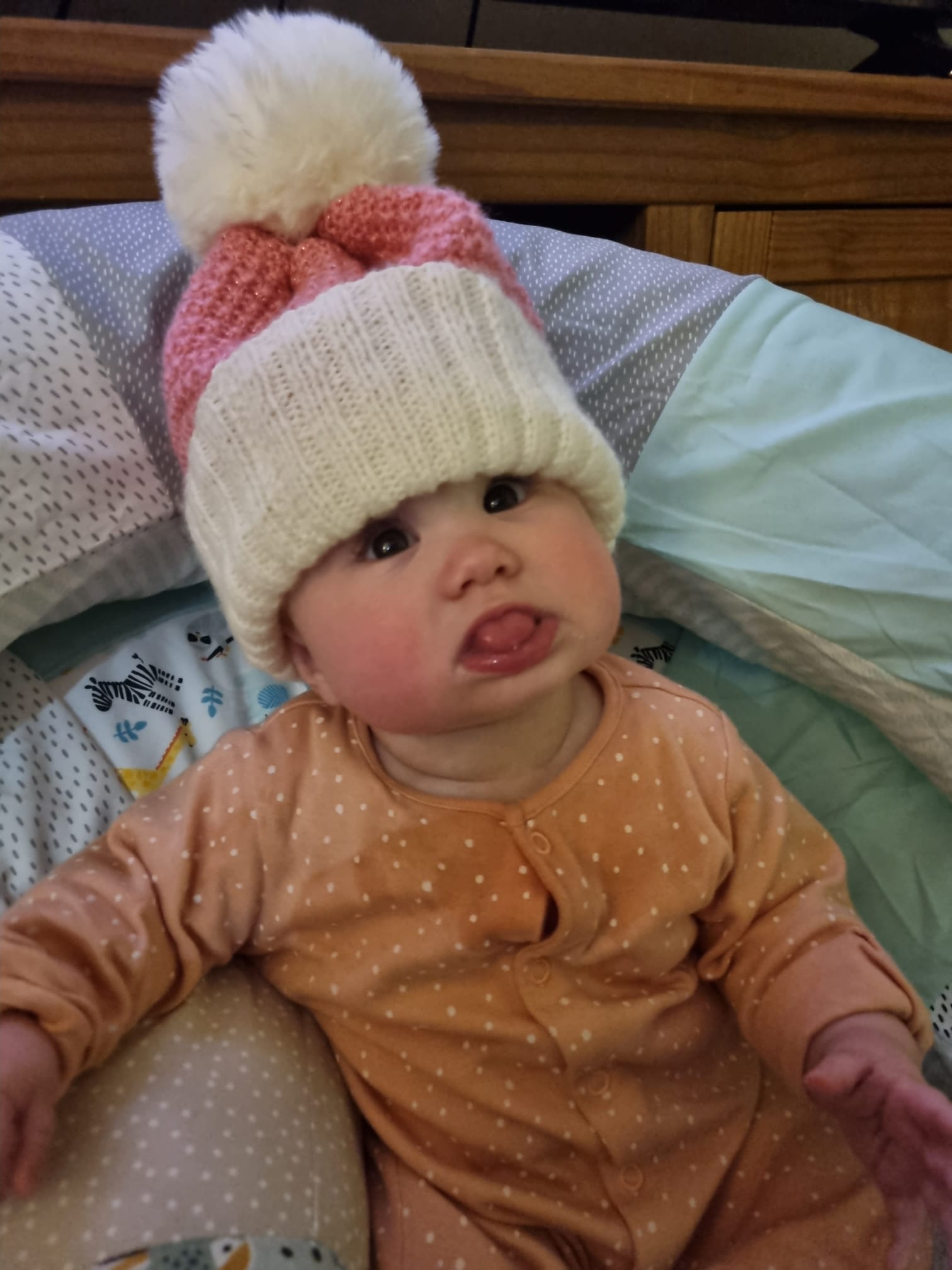The story of Eliza
Eliza has two rare conditions, Beckwith Wiedemann Syndrome and Metopic Craniosynostosis. Eliza’s story began when the midwife noticed Eliza had an abnormally large and long tongue and her right leg measured longer than her left. Paediatricians were called to look at her and they told me they thought she had Beckwith Wiedemann Syndrome but they would run a genetic test for this.
We waited months for the result and it came back negative. I learnt that 20% of children with Beckwith Wiedemann Syndrome actually have a negative blood genetics result due to a phenomenon called “mosaicsm”. Mosaicsm is where not all cells in the body have the abnormal genetic change, and in some children with Beckwith Wiedemann Syndrome the genetic abnormality may only be found in the tissue of the affected area. Therefore, many children have a negative genetic blood result and may only find the genetic cause if they undergo a tongue reduction and the tissue is tested, or if the child develops a tumour associated with the condition the tissue of the tumour shows a positive result. This is a big barrier to these children getting a diagnosis as they have to meet a clinical criteria for the diagnosis and often doctors and geneticists do not understand this. They also don’t understand BWS because it is a spectrum condition and some children can present incredibly mildly but still have the condition. The diagnosis is significant because children with Beckwith Wiedemann Syndrome are at a higher risk of developing childhood cancer, most notably wilms tumour and hepatoblastoma. A diagnosis allows a child with BWS to get regular cancer screenings every 3 months until they are 8 years old, even in children who have mosaic BWS and have a clinical diagnosis. Having mosaic BWS does not mean their risk of getting cancer is lower.
We were lucky to see a geneticist who diagnosed her and this enabled her to get the proper care plan needed (regular tumour screenings) and a referral to the macroglossia clinic for her larger tongue. She may need a tongue reduction surgery, as do many children who have macroglossia caused by BWS.
What is Beckwith Wiedemann Syndrome?
BWS is a congenital overgrowth condition which also increases a child’s risk of childhood cancer. Lots of BWS children tend to be larger than their peers but rapid growth slows down once they reach 8 years old. Most children with BWS have macroglossia (an enlarged tongue), however there are a wide range of clinical features and every child presents differently. BWS is a spectrum where every child looks different and has their own set if clinical features, much like how autism is a spectrum and no two people with autism are impacted the same way. Some children may have many features and others just one or two subtle features. For Eliza, she has macroglossia and a leg length discrepancy as well as a subtle muscle girth difference which is also common in BWS and a stork bite birth mark which is associated with the condition. However, other features can include midline abdominal wall defects, low blood sugar at birth or in the neonatal period, creases or pits in the ears and being born premature or large for gestational age.
The diagnosis felt incredibly scary because all I could focus on was that my baby was at and increased risk of getting cancer. We had quite a difficulty getting the diagnosis as nobody seemed to understand the phenomenon of mosaicsm and I was terrified she would be misdiagnosed and miss those important cancer screenings. However, we are in a much better place now as she is under a specialist team to monitor her tongue and she gets the regular screenings which so far have been all clear. She is a very happy and smiley baby!
Eliza also has Metopic Craniosynostosis, this is where the metopic suture of the skull was fused before she was born. However, Craniosynostosis can occur if any of the sutures of a babies skull fuse too early. Eliza’s Craniosynostosis was missed at birth and we only got the ball rolling when I raised my concern to her paediatrician who doubted that there was anything wrong. I did some thorough research and knew that she had Metopic Craniosynostosis so I asked the GP to refer her to a specialist craniofacial team and a month later she had surgery to remove the fused suture. This surgery now allows her head to grow into a more normal head shape with the help of helmet therapy. Craniosynostosis carries the risk of cranial pressure and surgery can also be done for cosmetic purposes so the child has a normal shaped head.
There are some genetic causes that have been identified for causing Craniosynostosis. However, most children have negative genetic results and it is a bit of a mystery what causes Craniosynostosis.
Eliza had surgery to remove the fused suture of her skull at 4.5 months old. She was a trooper and bounced back so quickly and rocked a head bandage and is now rocking a helmet. If she hadn’t been diagnosed when she was, she would have missed out on the timeframe for having the surgery she had which can only be done when a baby is under 6 months old. An early diagnosis is important so that all treatment options are open.
